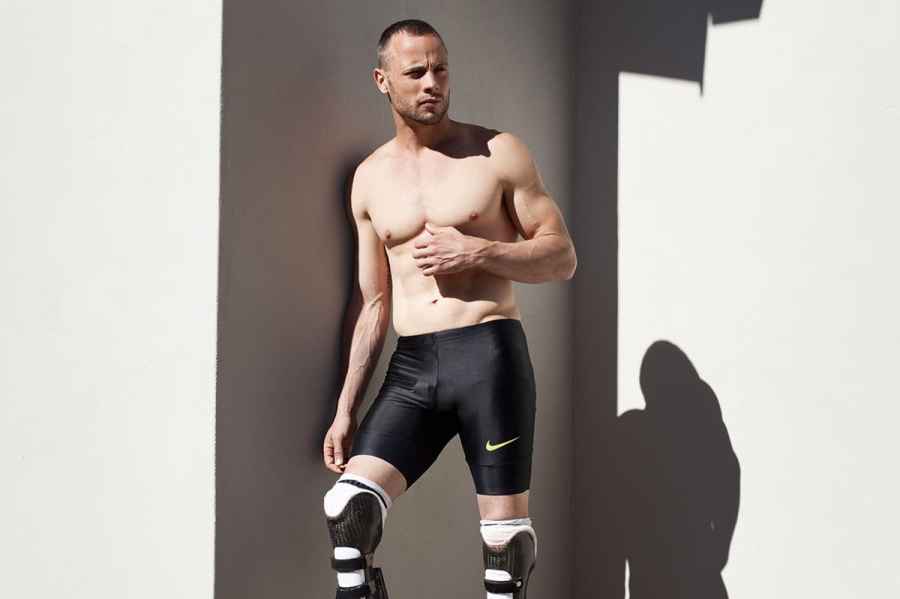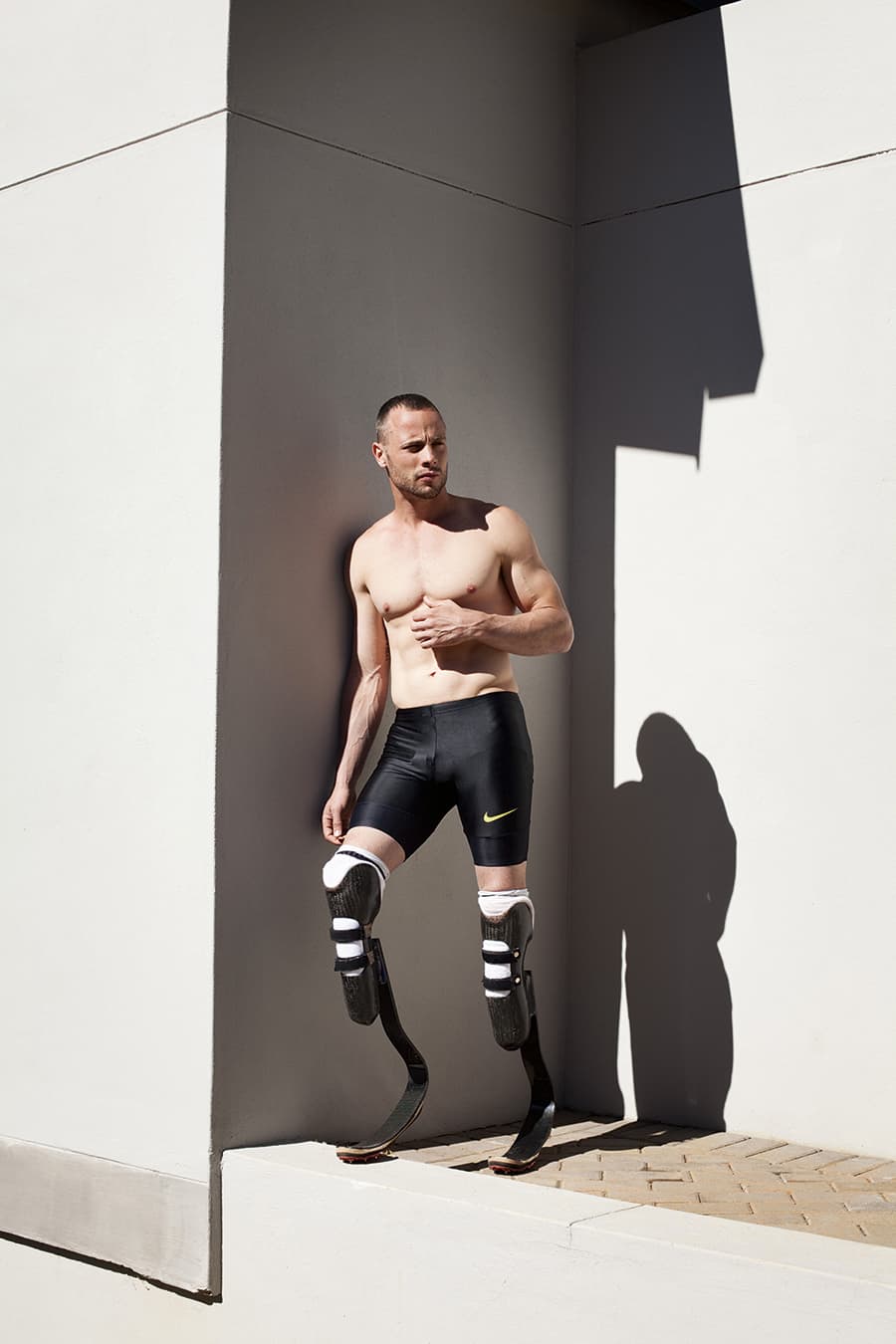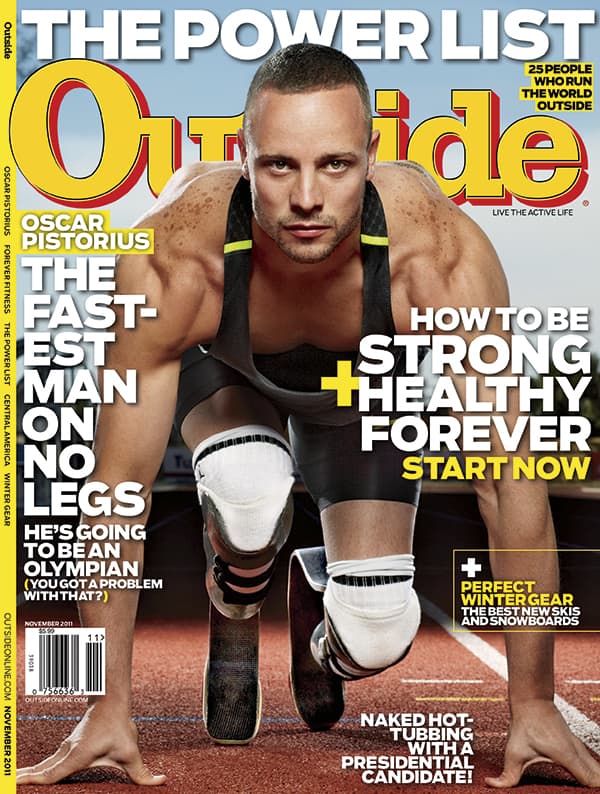This is one of those pictures where our perception of it has changed due to the widely reported tragic events that occurred some time after. When I shot this image, Oscar Pistorius was one of the world’s most famous disabled athletes and featuring across a variety of newspapers and magazines. Today, he is usually photographed while making appearances in South African courtrooms. Since shooting and killing his girlfriend, Reeva Steenkamp, in February 2013, he has become a tragic figure and convicted murderer.
When I was photographing Oscar Pistorius in August 2011, he was an international athletics superstar, nicknamed the ‘Blade Runner’. He had overcome the childhood amputation of both his legs below the knee to win gold medals at the Paralympics in 2004 and 2008. He was also about to compete against able-bodied athletes in the 400m and 4x400m relay races in the 2011 Athletics World Championships.
I had been commissioned to photograph him by American magazine Outside. I took an overnight flight to Johannesburg and on arrival I was met by an assistant, whose services I’d arranged beforehand. The magazine expected the pictures to be lit and to have high production values, so the assistant had brought all the lighting we needed in a van. He also had a big bag of biltong [dried meat], which was welcome and kept me going during the shoot as I hadn’t slept all night.
The portrait session was due to take place at the University of Pretoria athletics track. Before it began, the assistant and I spent some time arranging locations and setting up lighting. It was quite a windy day and we weighted down the lights with sandbags.
Then Oscar arrived, together with his coach and a friend. For the rest of the day we set up pictures in different locations around the stadium. I photographed him running, sitting in the changing room, in the discus net and walking on his hands on the track. I also photographed him on all fours, as if about to start a sprint. For that shot I used two lights behind him and a big softbox at the front. This image was subsequently used on the front cover of Outside.
From the time I spent with Oscar, I was very impressed with him. He was charismatic, but in a very modest way. He told me about his life and family background. He was an incredibly tough guy and seemed completely fearless.
The picture I like most from that day was taken next to the wall of the police station at the stadium. It was really hot, and although I’d never normally ask someone to take their top off for a picture it seemed appropriate at that point. He had a very toned, chiselled body and I felt it would make a simpler picture if he were wearing just shorts.
He was lit by direct sunlight, which was also hitting a wall you can’t see and filling in the shadows thrown by the sun. The wall wasn’t white, it was more of a taupe colour, so it’s not completely bleaching out and losing all detail, even though it’s got direct light on it. This meant I didn’t need to use any fill-in flash.
I shot the image using my Canon EOS 5D Mark II and a 50mm lens, handholding the camera. I used ISO 200, which I often prefer as there’s just a bit of noise and it looks more like film. Later, at the editing stage, I retouched the image to remove some ugly light fittings, to leave a plain wall and to simplify the image.
This picture wasn’t used in the magazine. They used the more obvious ones – the colourful images lit with flash, which fitted their style.
I was really pleased to get it because it’s so simple. However, the ambiguity and hint of darkness means it still resonates and has a power and a truth to it.
Using direct sunlight
When I first started shooting for magazines, I always used to shepherd people into direct sunlight. Of course, it doesn’t always make for a great portrait because it’s quite harsh on the subject’s eyes. Later in my career, I would get subjects to go into the shade if it was very sunny, because then they were only lit by soft indirect light bouncing into the shadows. However, I think as long as you use the correct exposure, it’s perfectly possible to shoot in direct sunlight. I like using it if I’m making a study of a subject rather than trying to get a more subtle and intimate portrait. The faster shutter speeds it gives means you can handhold the camera, which allows you more freedom and is much more intuitive than shooting with the camera on a tripod.
As told to David Clark









